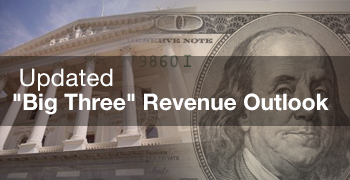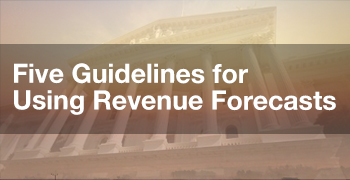
Ending the Triple Flip February 3, 2015
With the upcoming end of the "triple flip," a complex, decade-old mechanism affecting state and local finances in California, we have received several inquiries seeking a basic understanding of what the triple flip is and how its end will work exactly. This note addresses those issues.
Effects of L.A., Inland Empire on CA Unemployment February 2, 2015
We consider how the elevated unemployment rates in Los Angeles, Riverside, and San Bernardino Counties affect the statewide unemployment rate.
Agricultural Areas Tend to Have Higher Unemployment January 29, 2015
We consider the relationship between a California area having an agriculture-focused economy and its unemployment rate.
FTB December 2014 Revenue Exhibits Posted January 28, 2015
The Franchise Tax Board's twice-yearly revenue exhibits are highly technical, but include key information for those who track and forecast California's state income tax revenues.
CA Unemployment, While Improving, Still Among Highest in U.S. January 27, 2015
U.S. Bureau of Labor Statistics data on state employment trends in December show that, while California's job market has been improving, unemployment here still ranks high among U.S. states.
Initial 12/14 Jobs Report: Modest Growth to End Solid Year for State January 26, 2015
The state's Employment Development Department released its first report, to be revised later, on December 2014 job growth in California.
U.S. Price Inflation Very Low Now January 17, 2015
Inflation in the U.S. economy was very low in late 2014, and further drops in prices are possible in early 2015. We discuss both the risks and benefits of low price growth.
Sagging Global Economy May Affect California January 13, 2015
Over the past few months, some of our major international trading partners have seen their economic growth slow. We examine how the California economy may be affected.
Effects of Lower Oil Prices on Economy January 13, 2015
In our Overview of the Governor's Budget, we note that lower oil prices should help the economy in the near term.
New Governor's Budget Economic Forecast January 13, 2015
We compare key economic variables of the Brown Administration's new Governor's Budget plan forecast with those from recent LAO and administration projections.
Administration Revenue Projection Higher than LAO Nov. Totals January 9, 2015
On an "apples to apples" basis, a preliminary review of the Governor's January 2015 budget proposal shows that it assumes that the "Big Three" General Fund taxes for 2013-14 through 2015-16 will be $1.3 billion higher than the LAO projected in November 2014.
Sales Taxes Close to June 2014 Budget Forecast January 8, 2015
December 2014 sales taxes were 4 percent above projections from last June's state budget act. This adds to the much larger gains due to last month's personal and corporate income tax surge.
December Income Taxes Far Above June Budget Act Projections January 8, 2015
The preliminary December 2014 income tax totals increase the chances that General Fund revenues in 2014-15 will be billions of dollars above what our office projected a few weeks ago.
State and Local Governments With Their Own EITCs January 6, 2015
We provide links to other states' and localities' tax agencies that administer their own EITCs.
November 2014 California Jobs Report December 19, 2014
In most months, we will provide analysis of the Employment Development Department's monthly California jobs report.

















